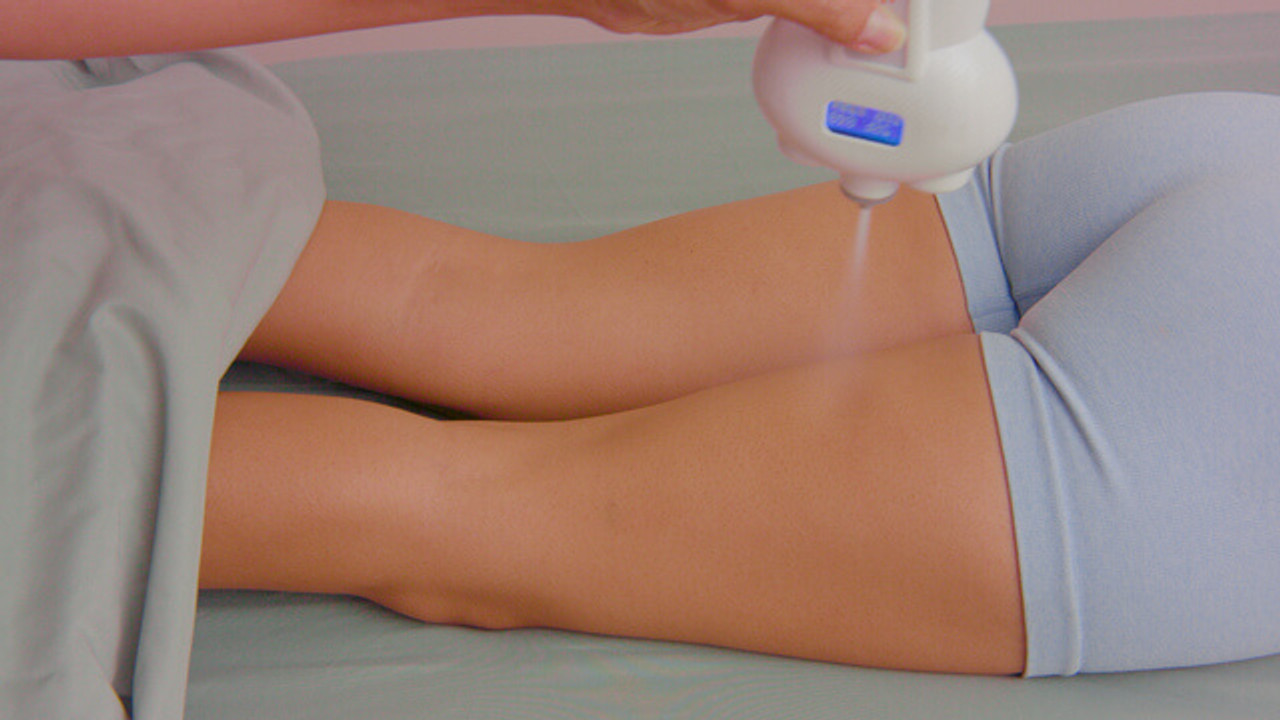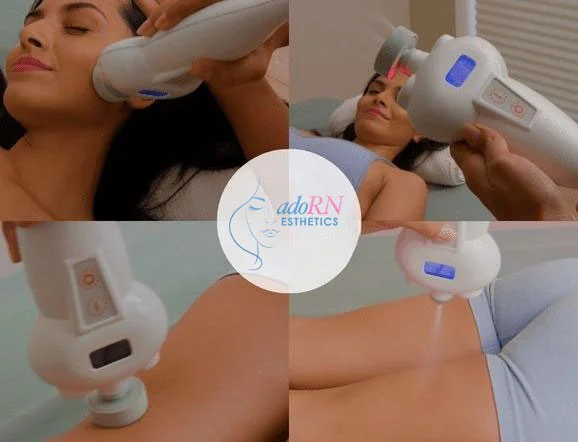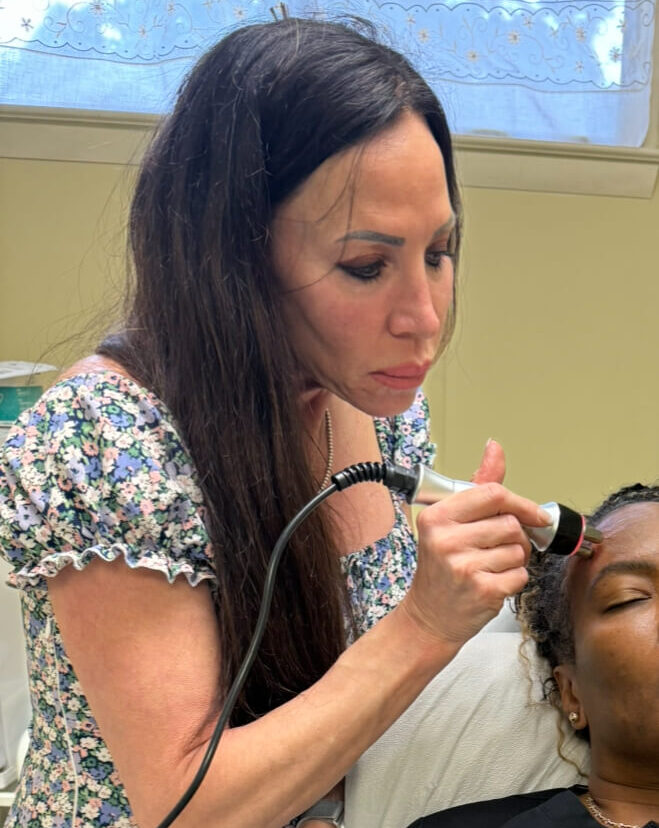Living with chronic pain can feel overwhelming, especially when traditional treatments don’t offer lasting relief. Cryotherapy is gaining attention as a powerful tool for managing chronic pain conditions. By exposing the body to extreme cold, this treatment helps lower inflammation, numb pain, and even improve mobility. With its growing popularity, many are turning to this innovative approach as an alternative or complement to medication. Could cryotherapy be the relief you’re searching for?
What is Cryotherapy?
Cryotherapy is a treatment that involves exposing the body to freezing or near-freezing temperatures. It’s used to treat a wide range of conditions, including chronic pain, inflammation, and even skin-related issues. The term “cryotherapy” stems from the Greek word “cryo,” meaning cold, paired with “therapy,” meaning treatment. By using controlled cold temperatures, it aims to reduce swelling, alleviate discomfort, and improve recovery. Whether done locally or across the entire body, cryotherapy is becoming a popular option for pain relief and physical recovery.
Types of Cryotherapy
There are several forms of cryotherapy available, each designed to meet different needs. Here are the most common types:
- Whole-Body Cryotherapy (WBC): This is the most intense form, achieved by standing in a chamber cooled to extremely cold temperatures (typically -200°F to -300°F) for a few minutes. It’s often used by athletes and individuals with widespread chronic pain.
- Localized Cryotherapy: Localized methods target specific areas of the body, often using handheld devices that emit cold air or liquid nitrogen directly onto the problem area. This option is great for treating smaller injuries like sprains or inflamed joints.
- Ice Pack Therapy: Perhaps the simplest form of cryotherapy, ice packs are applied to reduce swelling and pain in targeted regions. It’s an effective household solution for minor injuries or muscle pain.
- Cold Water Immersion (Cold Baths): This technique involves submerging the body or a specific part in cold water. Often seen in sports recovery, this method is excellent for managing muscle soreness.
Each type has its benefits and can be customized depending on the severity of the injury or condition being treated.
How Cryotherapy Works
So, how exactly does exposure to extreme cold affect the body? Cryotherapy creates physiological changes that help reduce pain and swelling.
- Vasoconstriction: When exposed to extreme cold, blood vessels shrink temporarily. This process, called vasoconstriction, helps reduce swelling by slowing down blood flow to the affected area.
- Numbing Pain Receptors: The cold acts like a natural anesthetic. It interrupts pain signals sent to the brain, offering quick relief from discomfort or chronic pain.
- Reducing Inflammation: By lowering the temperature in a specific area, cryotherapy slows down metabolic activity, reducing the production of inflammatory substances like cytokines.
- Boosting Endorphin Release: Whole-body exposure can even stimulate the release of endorphins — hormones that help improve mood and manage pain naturally.
Cryotherapy essentially tricks your body into survival mode. The cold shock causes it to redirect blood to key systems, reoxygenating blood and reducing inflammation. Once the session ends, blood flow quickly normalizes, often leaving you feeling refreshed and pain-free.
Cryotherapy continues to gain popularity because of its ability to address pain and discomfort in a non-invasive way. The science behind how it works is fascinating, offering a glimpse into why so many people swear by its benefits.
Chronic Pain Conditions Treated by Cryotherapy
Cryotherapy is not just a trendy wellness option—it’s a serious contender for managing chronic pain. By exposing the body to freezing temperatures, cryotherapy reduces inflammation, eases pain, and enhances mobility. Here’s how it can make a difference for specific chronic pain conditions:
Arthritis
Arthritis, with its persistent joint pain and swelling, can severely limit quality of life. Cryotherapy offers relief by targeting inflammation, a primary driver of arthritic pain. Cold temperatures cause vasoconstriction (narrowing of blood vessels), which reduces blood flow to inflamed areas and minimizes swelling.
After a cryotherapy session, blood circulation improves, delivering oxygen and essential nutrients to the joints. These effects have been linked to reduced stiffness and better mobility. Whether you’re living with rheumatoid arthritis or osteoarthritis, cryotherapy might be the ally you need for managing symptoms effectively.
Photo by Kindel Media 
Fibromyalgia
Fibromyalgia, often characterized by widespread pain, fatigue, and sleep disturbances, is notoriously difficult to treat. A growing body of research supports cryotherapy as an effective complement to traditional therapies. Studies have shown that regular whole-body cryotherapy sessions can reduce pain, enhance mood, and even improve sleep patterns.
The science? Exposure to cold stimulates the release of endorphins and reduces the activity of pain-signaling neurotransmitters. Long-term, this could mean better overall function and less discomfort for those struggling with fibromyalgia.
Chronic Back Pain
Lower back pain is among the most common complaints treated with cryotherapy. By numbing nerve fibers and reducing inflammation, whole-body or localized cryotherapy sessions can address the root causes of chronic back pain.
Experts have found cryotherapy to be particularly effective for muscle-based pain and conditions like herniated discs. The immediate cooling effect creates a numbing sensation, while repeated sessions can help reduce sensitivity and improve muscle recovery. For many sufferers, cryotherapy brings relief faster than conventional methods like medications or physical therapy alone.
Multiple Sclerosis
Multiple sclerosis (MS) is a complex neurological condition with symptoms like muscle spasms, fatigue, and inflammation. While there isn’t a cure, cryotherapy is emerging as a promising management tool. By lowering body temperature, cryotherapy helps lessen spasticity, ease joint pain, and improve mobility.
Research shows that cooling therapies, including whole-body cryotherapy, can enhance motor function and reduce levels of fatigue. Many patients report feeling more energized and experiencing less nerve pain after cryotherapy sessions. For those with MS, this could mean more good days where daily activities feel manageable.
Benefits of Cryotherapy for Pain Management
Cryotherapy isn’t just trending—it’s proving to be a viable option for managing chronic pain. Freezing temperatures can work wonders on inflammation, shorten recovery time, and alter pain signals in powerful ways. Let’s look at how these benefits come together to offer relief for long-term pain sufferers.
Reduction of Inflammation
Inflammation is a major contributor to chronic pain, but cryotherapy offers a science-backed solution. When exposed to extreme cold, the body undergoes vasoconstriction, where blood vessels narrow, slowing blood flow to inflamed areas. This process helps reduce the buildup of inflammatory markers such as cytokines, which are linked to swelling and discomfort.
Studies have shown that whole-body cryotherapy can significantly lower levels of pro-inflammatory substances, while increasing antioxidants that further curb inflammation. Local cryotherapy, on the other hand, offers pinpoint accuracy, treating specific problem areas like joints or muscle groups. The result? Improved mobility, reduced swelling, and less pain. For anyone with inflammation-driven conditions like arthritis or tendonitis, incorporating cryotherapy could be a game-changer.
 Photo by Kindel Media
Photo by Kindel Media
Pain Relief Mechanism
So, how does cryotherapy actually reduce your pain? It all comes down to its unique way of “hijacking” the body’s pain signaling system. Extreme cold creates a numbing effect by temporarily desensitizing nerve endings. This interruption cuts off the pain signals that travel to your brain, allowing for immediate relief.
But there’s another psychological benefit: endorphins. A session in a cryotherapy chamber causes your body to release these feel-good hormones, which not only improve your mood but also help control pain perception over time. For people managing chronic pain, this dual effect can reduce the need for over-the-counter or prescription painkillers.
Enhanced Recovery Post-Workout
Athletes have embraced cryotherapy as a go-to method for bouncing back after tough workouts. The logic is simple: high-intensity exercise often causes microtears in muscle fibers, followed by inflammation and soreness. Cryotherapy combats this by speeding up the recovery process.
When applied immediately after exercise, the cold reduces blood flow to overworked muscles and decreases swelling. It also minimizes post-exercise fatigue, making it easier to get back to training sooner. For individuals with chronic pain conditions like fibromyalgia or lower back pain, these recovery benefits can translate to better energy levels and less frequent flare-ups.
Cryotherapy is more than just a recovery trend—it’s a tool that chronic pain sufferers can use to manage symptoms day-to-day, especially when other treatments haven’t worked.
Risks and Considerations
While cryotherapy can offer significant benefits, it’s important to understand the potential risks and who should avoid it. Awareness can help you make an informed decision and stay safe during treatment.
Potential Side Effects
Cryotherapy is generally safe, but like any treatment, it comes with potential side effects. Here’s what you might experience and how to minimize complications:
- Skin Irritation: The cold exposure can cause redness, irritation, or even frostbite if not properly managed. To avoid this, always use reputable facilities and follow guidelines, such as wearing protective clothing over sensitive areas.
- Temporary Numbness or Tingling: Some users report feeling numb or tingly in treated areas. This sensation is usually temporary and subsides shortly after the session.
- Swelling or Mild Pain: Post-treatment discomfort is not uncommon, especially for localized cryotherapy. Applying a warm compress afterward can help speed recovery.
- Infection Risks (rare): Improper handling of cold tools or unclean equipment could lead to infections. Always select licensed providers to lower this risk.
- Breathing Issues or Dizziness: Whole-body cryotherapy chambers can sometimes cause dizziness or lightheadedness due to the extreme cold or reduced oxygen. If this happens, exit the chamber immediately.
Listen to your body and communicate with the provider. If something doesn’t feel right, don’t hesitate to ask questions or stop the session.
Who Should Avoid Cryotherapy?
Not everyone is a good candidate for cryotherapy. Certain health conditions or factors increase the risks, so it’s essential to know if this treatment is safe for you.
Avoid cryotherapy if you have the following:
- Heart Conditions: If you’ve experienced a heart attack or have severe hypertension, cryotherapy can strain your cardiovascular system and increase risks.
- Pregnancy: Extreme cold may not be safe for pregnant individuals, so it’s best to avoid this treatment entirely.
- Respiratory Illnesses: Cryotherapy chambers can worsen breathing issues, particularly for those with asthma or other respiratory problems.
- Circulatory Disorders: If you have Raynaud’s disease or poor circulation, cryotherapy could aggravate symptoms.
- Uncontrolled Diabetes: Cold therapy can impact blood sugar levels and healing, especially for those with nerve damage.
- Claustrophobia or Anxiety: Whole-body cryotherapy involves standing in an enclosed chamber, which may trigger anxiety or panic attacks.
Cryotherapy isn’t for everyone, and that’s okay. Always consult your doctor before trying a session, especially if you have pre-existing conditions. Focusing on safety ensures your experience is both effective and worry-free.
How to Get Started with Cryotherapy
For anyone dealing with chronic pain, cryotherapy may seem like an exciting option. But where do you begin? Getting started with cryotherapy involves understanding how to select the right clinic, knowing what to expect during your appointments, and preparing financially. Here’s how you can approach this step-by-step.
Finding a Qualified Provider
When it comes to something as sensitive as managing chronic pain, choosing the right clinic is essential. You want to ensure you’re trusting qualified professionals who prioritize safety and efficacy.
- Look for Licensed Professionals: Check that the clinic employs certified practitioners and adheres to industry standards for safety and hygiene.
- Read Reviews: Recommendations and reviews can tell you a lot about customer satisfaction and treatment success.
- Verify Equipment: Clinics should use modern, well-maintained cryotherapy equipment. Ask about their systems to confirm this.
- Transparent Policies: Look for facilities that explain their treatment plans, safety precautions, and costs upfront. Avoid places that push vague promises or hidden fees.
Don’t hesitate to reach out to multiple clinics. A quick conversation can help you gauge their expertise and approach to care.
 Photo by Andrea Piacquadio
Photo by Andrea Piacquadio
What to Expect During a Session
Your first cryotherapy session might feel intimidating, but it’s really straightforward once you understand the process.
- Preparation: Most sessions require minimal prep. You’ll typically undress to your comfort level and wear protective gear for extremities (like gloves and socks).
- Session Duration: Each session lasts about 2-3 minutes for whole-body cryotherapy. Localized treatments may vary depending on the area being targeted.
- Cold Sensation: The exposure to ultra-low temperatures may feel intense but not unbearable. Most people describe it as refreshing or invigorating.
- Supervision: A technician will monitor you throughout the session to ensure your safety.
- Aftercare: Once the session ends, you’re encouraged to warm up and hydrate. Some people feel a rush of energy or pain relief immediately.
It’s always okay to stop a session if you feel discomfort. Clinics prioritize client safety and adjust treatments as needed.
Cost of Cryotherapy Treatments
The price of cryotherapy can vary widely depending on the type of treatment, location, and the number of sessions. Here’s a breakdown of what to expect financially:
- Single Sessions: Prices range from $40 to $60 for localized treatments and $60 to $100 for whole-body cryotherapy.
- Memberships or Packages: Many clinics offer bulk pricing, with discounts when you purchase multiple sessions or monthly subscriptions. These can bring the cost per session down to $30-$50.
- Free Consultations: Some clinics provide a free consultation or trial session to help you decide. Be sure to ask if this is an option.
Be wary of extremely low-cost options that could compromise on safety or quality. Quality care might cost more, but it ensures effective and safe treatment.
Conclusion
Cryotherapy is redefining how we think about pain management. From reducing inflammation to easing nerve activity, its benefits go beyond temporary relief. It’s an accessible option for those with conditions like arthritis, fibromyalgia, or chronic back pain.
If you’re tired of traditional methods falling short, consider exploring cryotherapy. Talk to your doctor or find a licensed clinic to take that first step. Pain doesn’t have to define your life—options like cryotherapy can help you take control.





